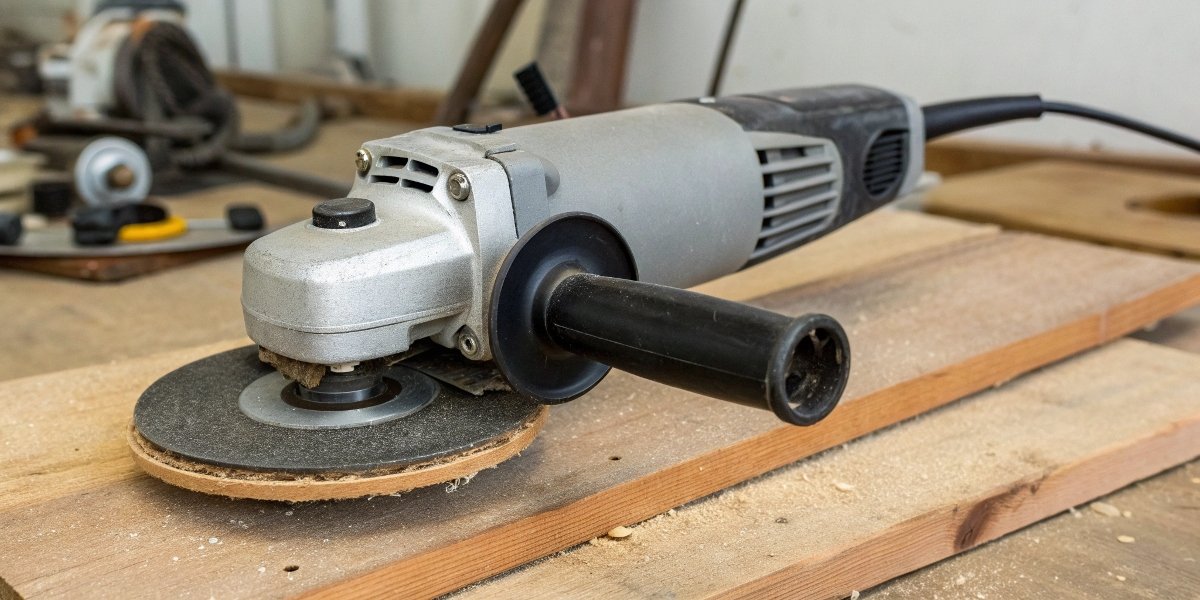
You need to equip your team, but the range of grinder sizes is confusing. Choosing the wrong size means wasted money on tools that are either inefficient or dangerously overpowered for your daily tasks, hurting your bottom line.
The 4.5-inch (115mm) angle grinder is by far the most common and versatile size used globally. [1, 2] Its excellent balance of power, control, and a wide variety of available discs makes it the standard choice for most workshops and job sites. [1, 2]
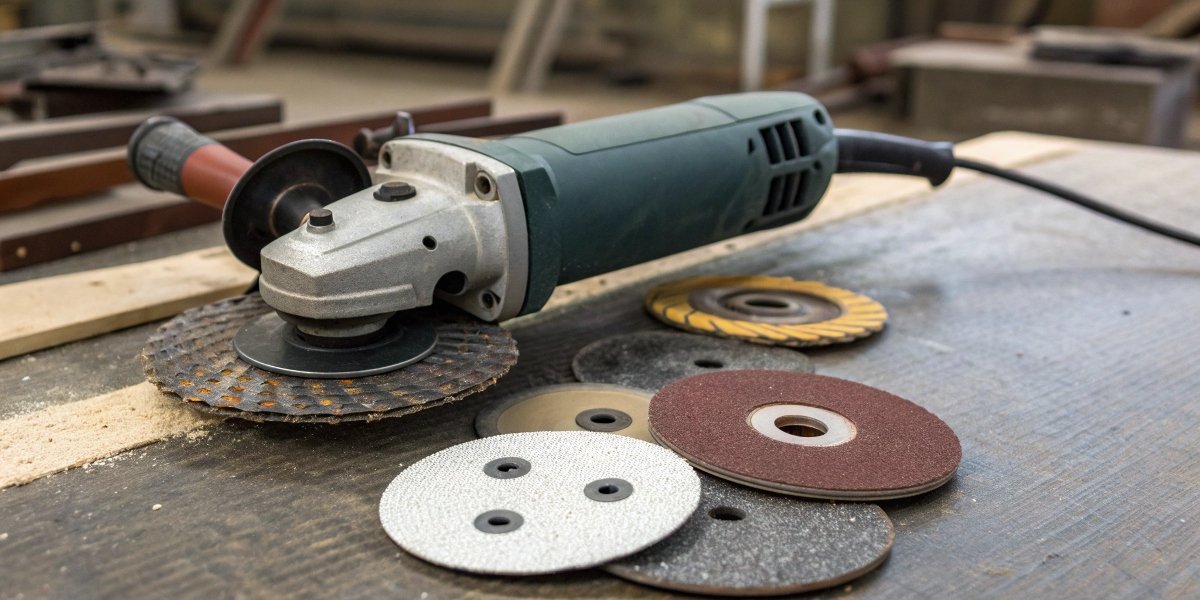
Based on my insight from nearly three decades in this industry, this holds true across the board. Generally speaking, 4.5-inch grinding discs1 and cutting wheels2 are the most used, so it’s no surprise that 4.5-inch angle grinder3s are also the most common. The most important thing, a rule we live by at Reliable (RL), is that the angle grinder and the abrasive disc4 must be properly matched. This ensures you get the performance, efficiency, and safety that your business depends on.
What is the normal angle grinder size?
You want to buy the "standard" tool for your shop, but so many options exist. Picking something that isn’t the normal size can lead to difficulty finding a wide selection of discs and can make the tool less useful for everyday jobs.
A 4.5-inch (115mm) angle grinder is considered the normal, or standard, size in the industry. [1] This is because it offers the best all-around combination of power, weight, maneuverability, and disc availability for the widest range of tasks. [2]
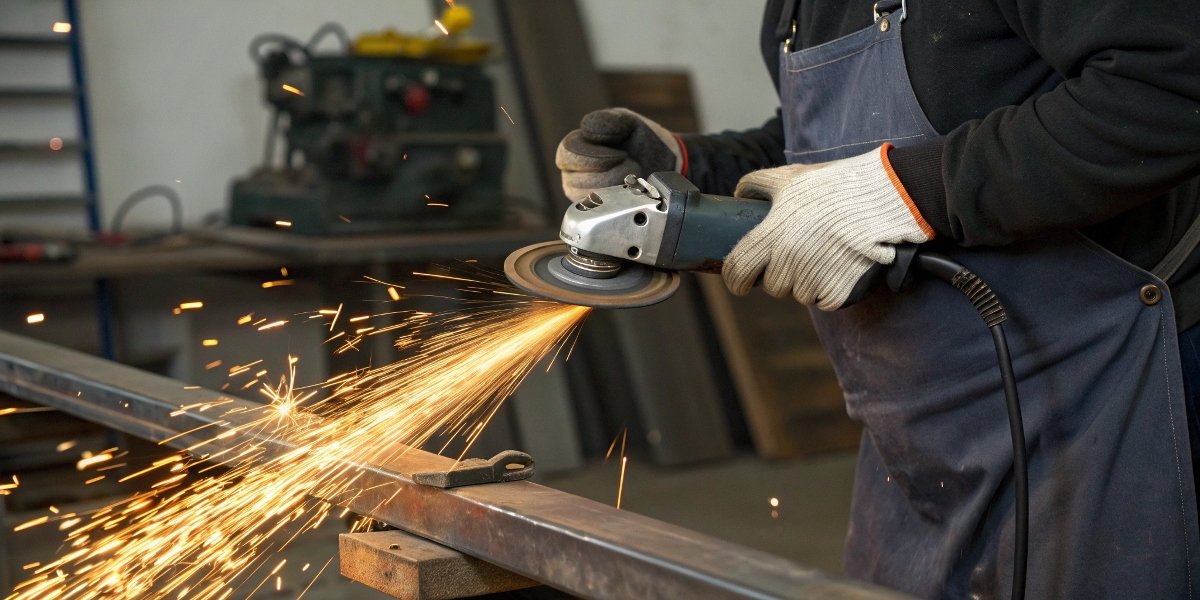
Let’s dive deeper into why this size became the standard. It hits the perfect sweet spot for professional use. It’s powerful enough to cut through rebar and grind down welds effectively, yet it’s lightweight and compact enough for an operator to use comfortably for long periods without excessive fatigue. This reduces the risk of errors and accidents. As a manufacturer, we see the demand firsthand. The massive volume of 4.5-inch discs we produce, from general-purpose cutting wheels to specialized flap discs, is a direct reflection of this size’s popularity. For a purchasing manager5 looking to equip a workforce, making the 4.5-inch grinder your standard tool is the most practical and efficient choice. It guarantees you will always have a wide variety of cost-effective consumables6 ready for any job that comes through the door.
Which is better, a 4 inch or 5-inch angle grinder?
You are deciding between two very similar models, the 4.5-inch and the 5-inch. It seems like a small difference, but this choice can impact your team’s cutting depth, work speed, and even the long-term cost of consumables.
Neither is universally "better"; the choice depends on the primary task. [4] The 5-inch (125mm) grinder provides slightly more cutting depth and longer disc life, while the 4.5-inch (115mm) is often lighter and has the widest selection of discs. [4, 5]
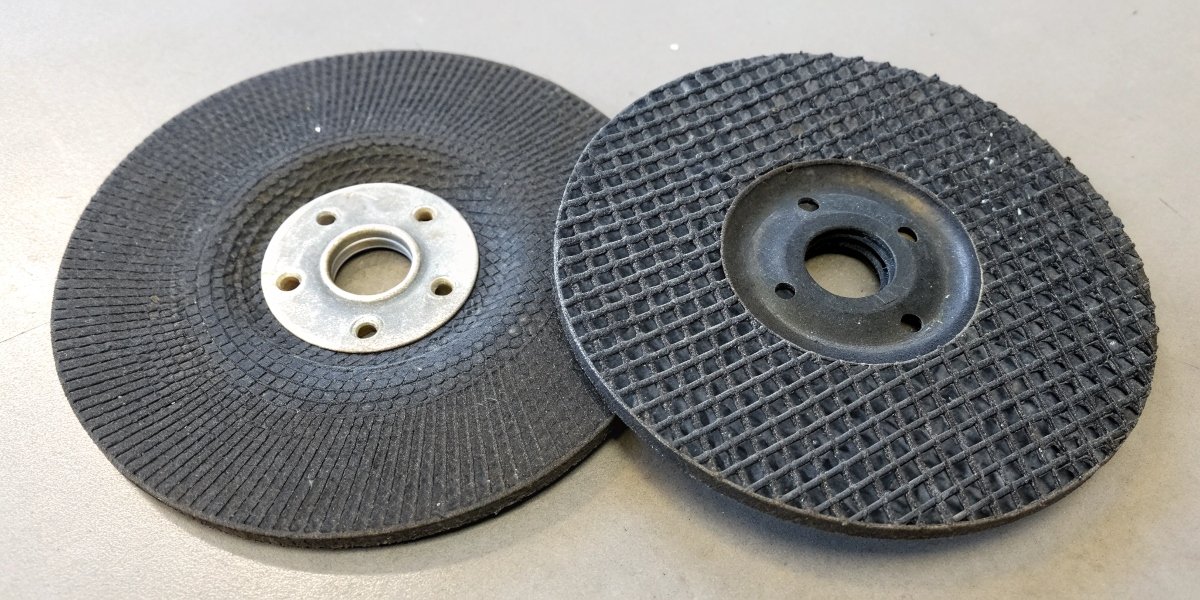
Let’s break this down from a practical, B2B perspective. For your operators, the small increase in diameter on a 5-inch grinder means a bit more reach and slightly faster cutting on long, straight runs. The discs also last marginally longer because of the larger circumference. However, the 4.5-inch grinder is typically the most popular model from major brands, meaning it’s often lighter, more ergonomic, and has a much broader, more competitively priced range of available discs. For a purchasing manager, this is a key consideration for managing consumable costs. If your primary work is production cutting of uniform material, the 5-inch might offer a slight productivity edge. But for an all-purpose workshop that handles fabrication, repairs, and finishing, the versatility and cost-effectiveness of the 4.5-inch grinder make it the more strategic choice.
| Feature | 4.5-inch (115mm) Grinder | 5-inch (125mm) Grinder | Key Buyer Consideration |
|---|---|---|---|
| Versatility | Excellent | Very Good | 4.5-inch has the widest disc variety. |
| Cutting Depth | Good | Slightly deeper | 5-inch has a minor advantage for thick material. |
| Weight/Ergonomics | Often lighter and more compact | Can be slightly heavier | Lighter tools reduce operator fatigue7. |
| Disc Cost | Generally more cost-effective | Can be slightly more expensive | Disc availability and price impact long-term costs. |
What are 7-inch grinders used for?
You see the large 7-inch grinder and are tempted by its promise of power. But this is not a general-purpose tool, and using it for the wrong tasks is inefficient, clumsy, and can be unsafe for operators not trained on it.
7-inch angle grinders are specialized, heavy-duty tools for demanding industrial jobs. [8] They are primarily used for fast, aggressive material removal on large steel structures, pipeline fabrication, and heavy-duty concrete work. [7, 8]
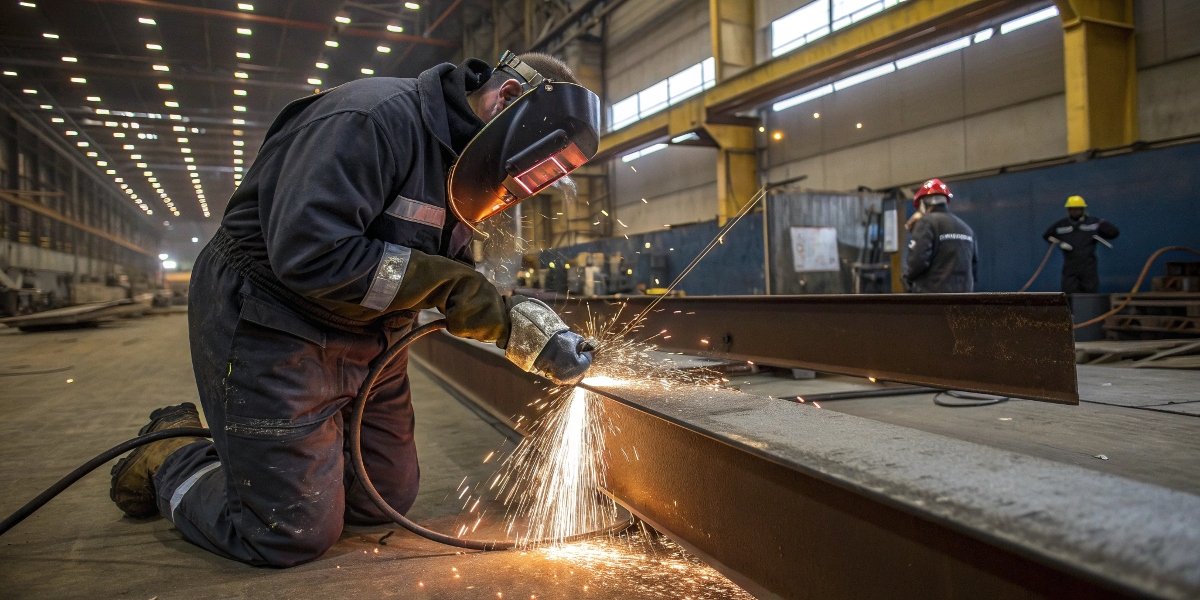
These grinders are built for pure power. They bridge the gap between the all-around 4.5-inch models and the huge 9-inch grinders. You will find them in environments like shipyards, heavy equipment repair shops, and on commercial construction sites. Their main purpose is to remove a lot of material very quickly. This includes tasks like grinding down large welds, beveling the edges of thick steel plates before welding, or cutting through big sections of concrete and stone. They are significantly heavier and have much more torque than their smaller cousins. An operator needs proper training and physical strength to handle a 7-inch grinder safely and effectively. For a purchasing manager, these are not tools you buy for general shop use. They are a specific investment for a specialized, high-demand task.
Why are 9 inch angle grinders banned?
You want maximum cutting depth, but your site foreman has banned the use of 9-inch grinders. This rule might seem like an obstacle, but it is a critical safety measure based on a well-documented and severe risk.
While not legally banned by all governments, most major construction firms and safety-conscious companies prohibit 9-inch (230mm) grinders. [9] This is because their immense power and large disc diameter create a high risk of violent kickback, which is a major cause of serious injury. [9, 10]
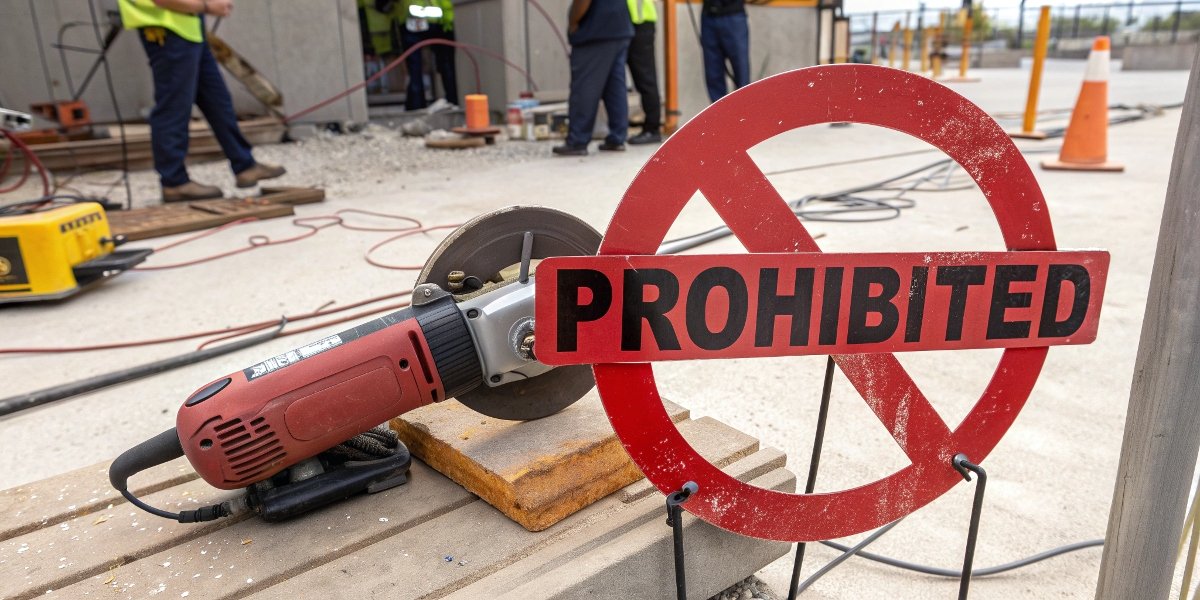
The reason for these bans is simple physics. A heavy 9-inch abrasive disc spinning at 6,600 RPM has enormous rotational energy. If that disc catches or jams in the workpiece, all of that energy is transferred back into the tool in an instant. This creates a violent kickback that can easily rip the grinder out of the operator’s hands, causing severe lacerations or worse. The UK’s Health and Safety Executive (HSE) has highlighted these dangers for years, leading to widespread restrictions. [9] As a supplier, our commitment is to our partners’ safety. While we manufacture high-quality 9-inch discs, we always advise clients to assess if a safer alternative exists. Often, using a 5-inch grinder or a different tool like a demolition saw can achieve the same result without the extreme kickback risk8.
Conclusion
The 4.5-inch grinder is the most common size for its versatility. However, the most important decision is to match the grinder and the disc to your specific job, ensuring you get the best performance and keep your operators safe.
-
Learn about the different types of grinding discs to maximize the performance of your angle grinder for specific tasks. ↩
-
Understand the differences in cutting wheels to choose the right one for your angle grinder and improve your cutting efficiency. ↩
-
Explore the advantages of the 4.5-inch angle grinder, the most versatile tool for various tasks, ensuring efficiency and safety. ↩
-
Get tips on selecting the right abrasive disc to enhance the performance and safety of your angle grinder. ↩
-
Understand the key factors a purchasing manager should evaluate to make informed decisions on angle grinder purchases. ↩
-
Explore options for cost-effective consumables to keep your angle grinder running efficiently without breaking the bank. ↩
-
Find out how the weight of angle grinders impacts operator comfort and productivity during use. ↩
-
Discover the dangers of kickback in angle grinders and how to mitigate these risks for safer operation. ↩
Written by
leeon
You may also be interested in:

How do you cut bolts with an angle grinder?
Struggling to make a clean cut on a stubborn bolt? Using an angle grinder can feel intimidating, but it is a fast and effective method
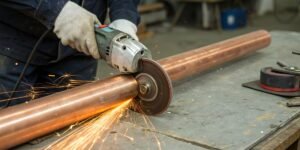
Can I use an angle grinder to cut a copper pipe?
Struggling with a quick copper pipe cut? Worried about damaging the material? An angle grinder is a fast solution, but using it wrong can be

Can an angle grinder cut meat and bones?
Struggling to cut tough bones? Thinking of grabbing your angle grinder for a quick solution? This powerful tool seems like an easy answer, but it’s
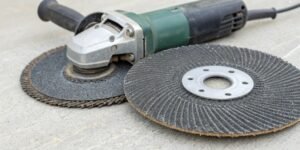
Can a metal cutting disc be used on an angle grinder?
Are you unsure about putting a metal cutting disc on your angle grinder? Using the wrong tool combination is a real safety hazard. But with
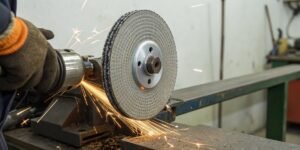
What is the best grinding wheel for cutting aluminum alloys?
Struggling to cut aluminum without your grinding wheels clogging up? This common problem wastes time, ruins your workpiece, and drives up costs, turning a simple

What does an angle grinder do that other tools can't?
Struggling with tools for multiple tasks? Carrying a heavy toolbox is inefficient. An angle grinder replaces many tools, saving you time and effort on the
